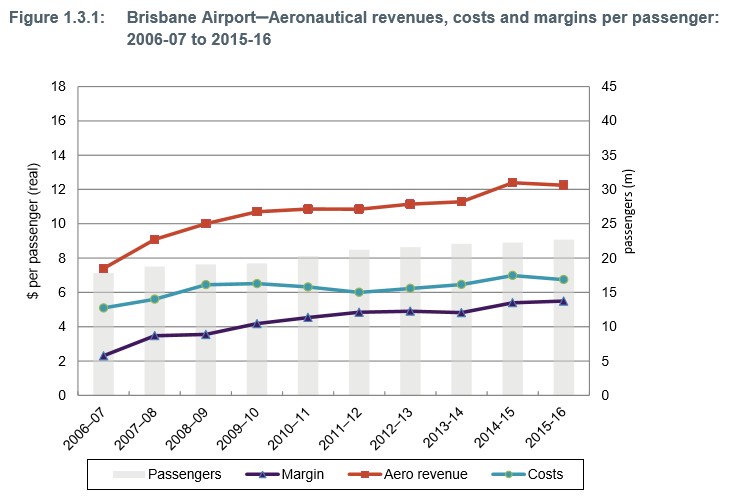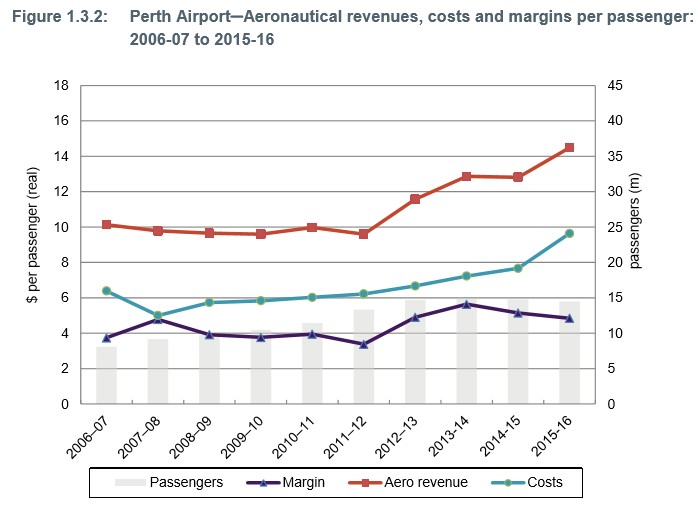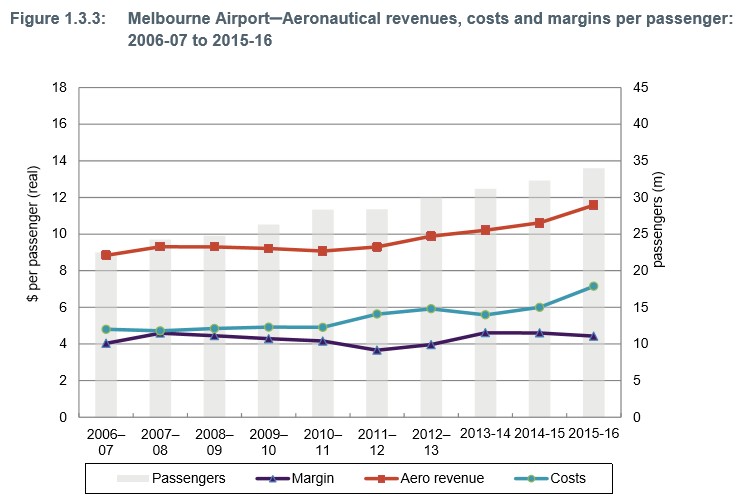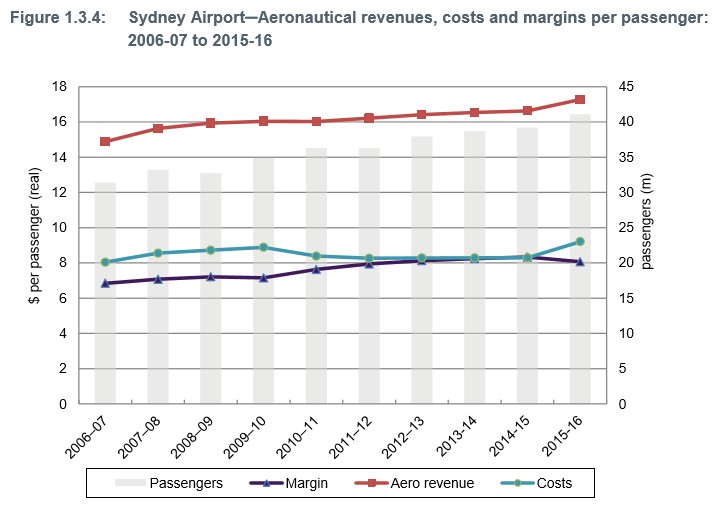Over the past few years, Australian Competition and Consumer Commission (ACCC) head, Rod Sims, has issued a spate of warnings about, and voiced opposition to asset privatisations.
One of Sims’ key concerns is that consumers are being gouged as the new monopoly or oligopoly owners raise prices and extract rents from consumers.
Today, the ACCC released its annual Airport Monitoring Report, which has found that Australian major airports have over the past decade collected $1.57 billion more in revenue from airlines and passengers than they would have if average prices charged for access to airports had held constant in real terms:
“The ACCC estimates that over the past decade, these airports have collected $1.57 billion more in revenue from airlines than they would otherwise have collected if average prices were held constant in real terms,” Mr Sims said.
“Despite these much higher revenues per passenger, ratings of service quality are not materially different from those seen a decade ago.”
Car parking profit margins also continue to remain high with Sydney airport recording a car parking profit margin of 73.1 cents per dollar of revenue.“The returns that the airports get on car parking show that they do not face significant competitive constraints when setting prices,” Mr Sims said…
The report also found that a combination of higher access charges and passenger growth had grown airport revenues from landside operators such as taxis, buses and off-airport carpark operators.
“Airports set the terms and prices to landside areas. This means that they are in a position to impede competition to on-airport car parking by increasing access costs for alternatives such as off-airport car park operators”, Mr Sims said.
The report found that Brisbane airport collected the most additional revenues over the period ($676 million), followed by Sydney ($475 million), Melbourne ($276 million) and Perth ($142 million):




Moreover, the report notes that the economies of scale that comes from rising passenger numbers should have driven airport costs down. That this hasn’t occurred suggests that airports have become less efficient:
There is no doubt that airports have had to invest significantly over this period to keep up with growing passenger numbers, which comes at a high cost. Significant projects have included the new runway under construction at Brisbane Airport, the T1 international and domestic pier at Perth Airport, and the new T4 at Melbourne Airport.
However, at the same time, growing passenger volumes may also have better enabled airports to fund these investments by spreading the cost over more passengers. The four airports are now collecting revenues associated with 32 million more passengers than they were in 2006-07. This means that many aspects of airport infrastructure may have been shared across more passengers than in the past, therefore putting downward pressure on the average cost per passenger.
However, over the past decade, data collected from the airports on costs does not support this. All airports have reported increases in aeronautical costs per passenger in real terms. The biggest increases have been at Perth Airport with 50.9 per cent and Melbourne Airport with 48.9 per cent, followed by Brisbane (32.5 per cent) and Sydney (14.4 per cent) airports. Such large increases in costs—despite some possible downward pressure as a result of economies of scale—raises questions about whether the airports have sufficient incentive to maintain cost control rather than simply passing on costs to airlines.
Thus, Australia’s airports represent another failure of privatisation. Instead of driving greater efficiencies and lower costs for consumers, we have experienced the opposite. Instead, the private owners have used their market power to lazily force-up user costs and boost their profits.

